Duomo, Galleria and Scala Teathre are the essentials of any trip to Milano. The immense Gothic Cathedral you can stare at either from the ground or on the roof, the sumptuous glass-and-iron shopping arcade, and the world temple of opera music, are the city’s three most favorite attractions, for visitors and Milanese alike.
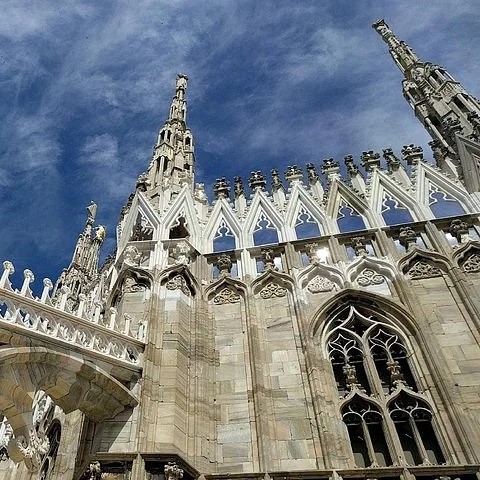
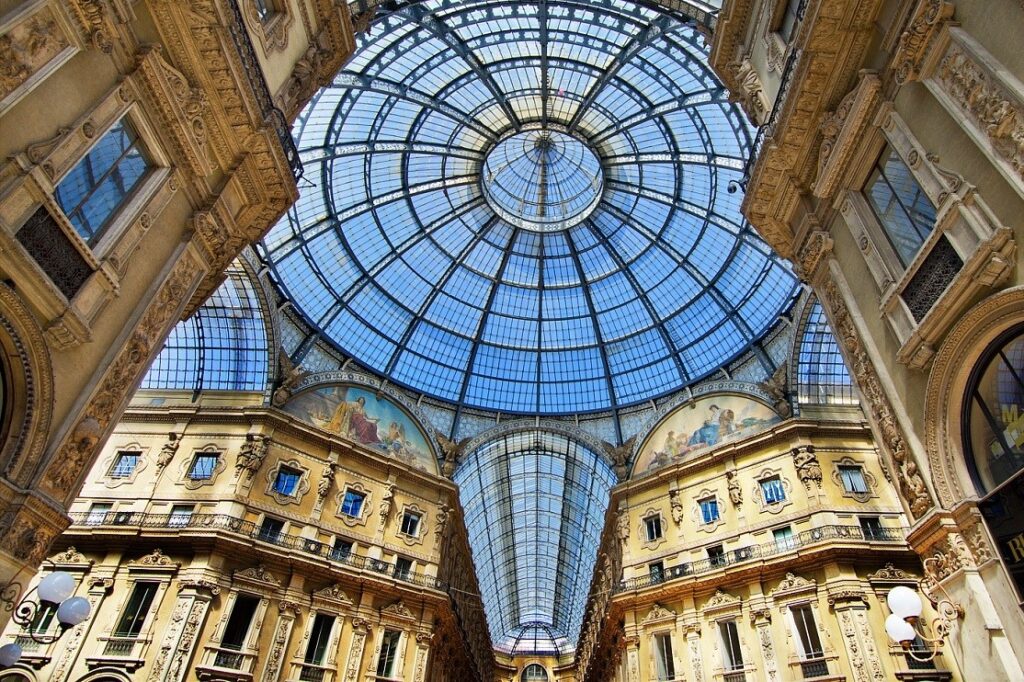
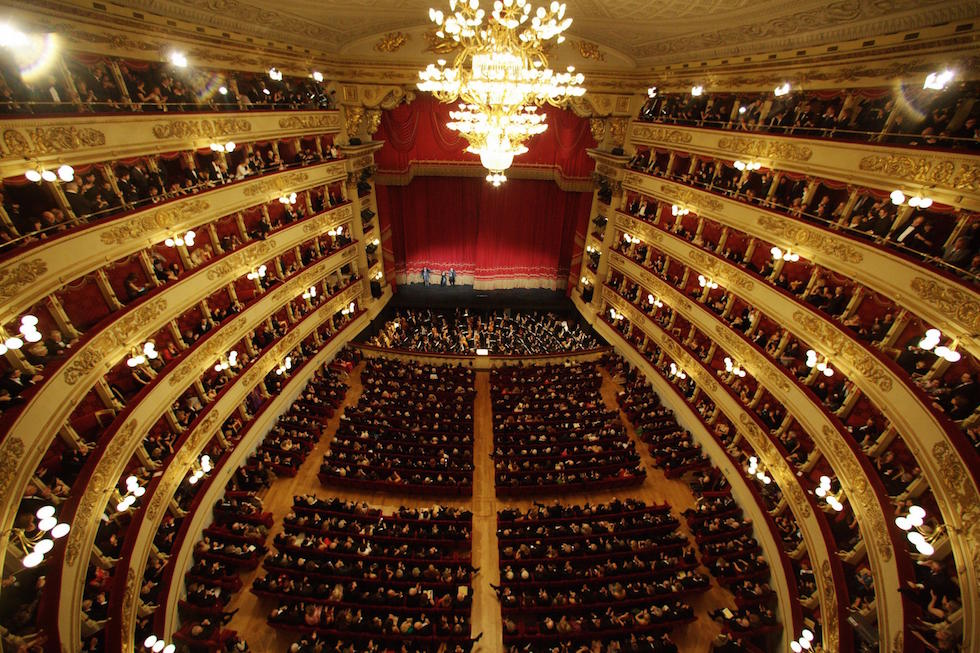
The Duomo of Milano with the glittering gold Madonnina is an architectural masterpiece that remains imprinted in the memory of all those who visit Milano. The thousands of intricately carved spires and statues are an awesome sight for those exiting the Metro (M1 Duomo) or arriving from Galleria Vittorio Emanuele.
Taking a stroll in the Galleria is a popular pastime and is a way of entering the heart of the city, something the Milanese feel intensely: lingering and meeting people is definitely de rigueur in this splendid covered arcade linking the Duomo to Teatro alla Scala. It was designed as a porticoed passageway that immediately became a showcase for high-end shopkeepers, the place for a leisurely socializing walk and an aperitif or a relaxed dinner after the Opera. At the entrance there’s Camparino where you can sample one of the best espressos in Milano at the counter in the same café where Depero congregated with the other futurists.
The Teatro alla Scala, built in 1776 to a design by Giuseppe Piermarini, is one of Europe’s most prestigious opera houses. In keeping with traditional Italian theatre design, the auditorium is in a horseshoe arrangement, with four tiers of boxes, two galleries and a deep stage. Since 1778, operas and ballets at La Scala have provided exhilarating emotions for enraptured audiences: its famous stage has hosted the greatest conductors and artists – from Arturo Toscanini to Claudio Abbado, on to the magnificent voice of the iconic Maria Callas.
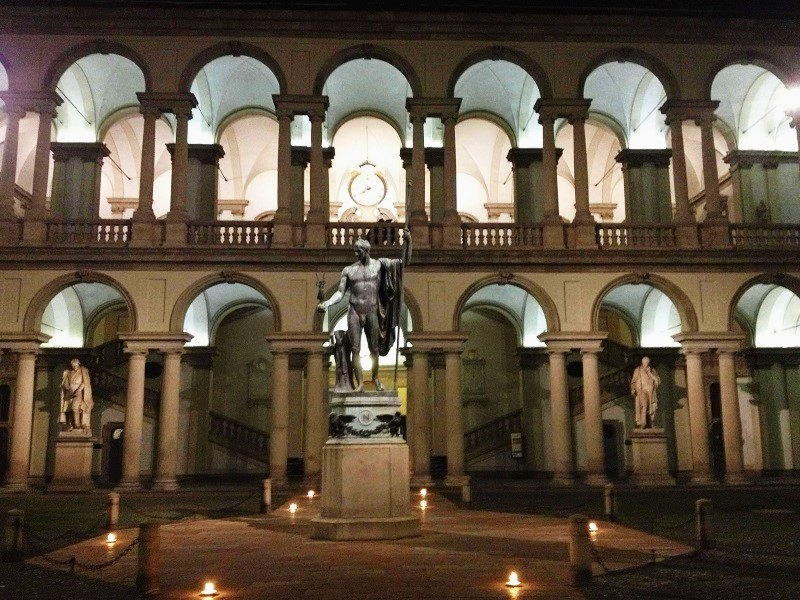
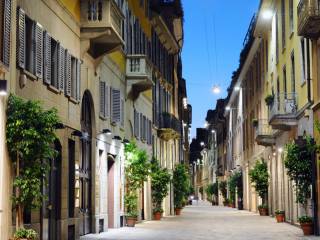
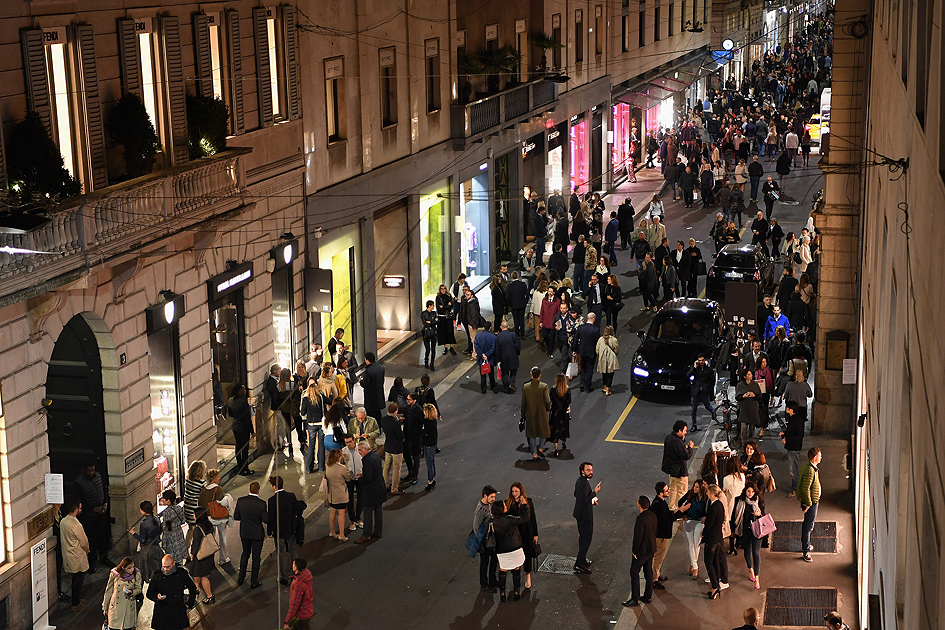
Via Brera begins from Piazza della Scala, leading to the elegant district of the same name. Walking through the pedestrian alleys, you will find yourself in what used to be the artists’ neighbourhood, where you may still meet a fortune-teller, or a painter who creates and exhibits his works directly on the street. Bars and restaurants put their tables out in the open on sunny days: an ideal solution to enjoy a quiet break. As for the shops, they range from small curiosity shops to art galleries, to fashion ateliers that blend craftsmanship and refined taste.
In this picturesque context, the Pinacoteca di Brera represents an essential stop. If you want to find out more about the treasures kept in this unique art collection, find the dedicated article here.
You’re likely to spend time walking along Corso Vittorio Emanuele, a bustling pedestrian street, lined by tall porticoes where all the popular brands have their points of sale, in addition to department stores, shoe shops, movie theaters, and a lot more.
Last but most glamorous, starting from via Montenapoleone, discover the Fashion Quadrangle and the combination of refined taste and daring style that has made Milanese fashion sought around the world.
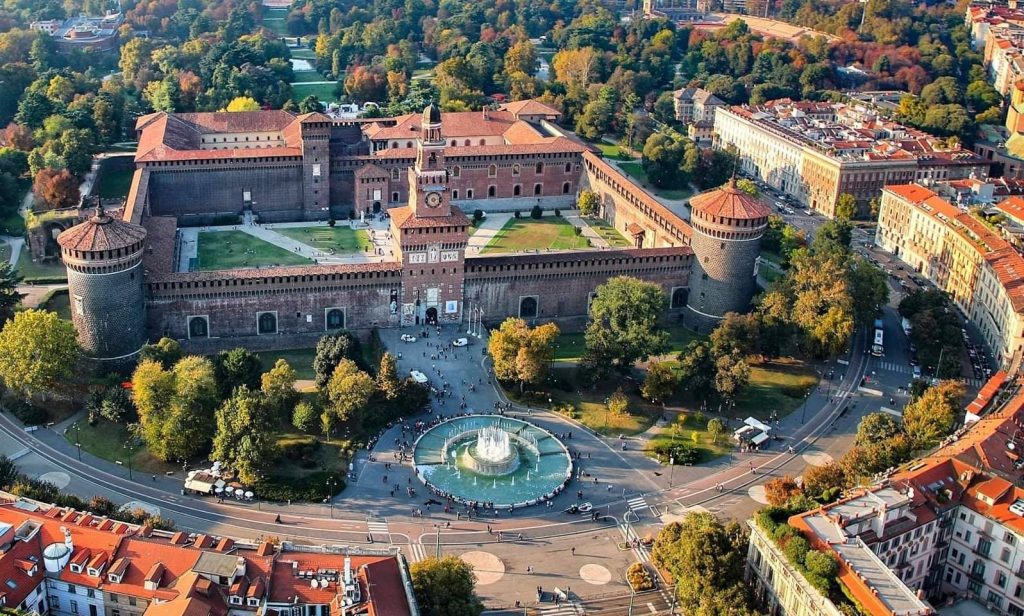
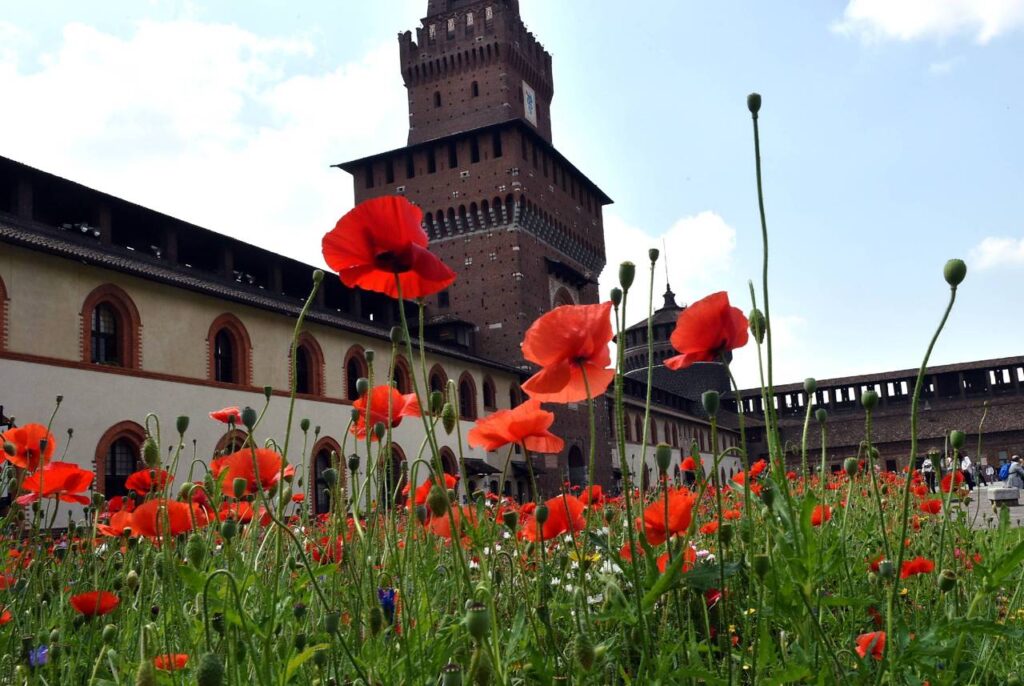
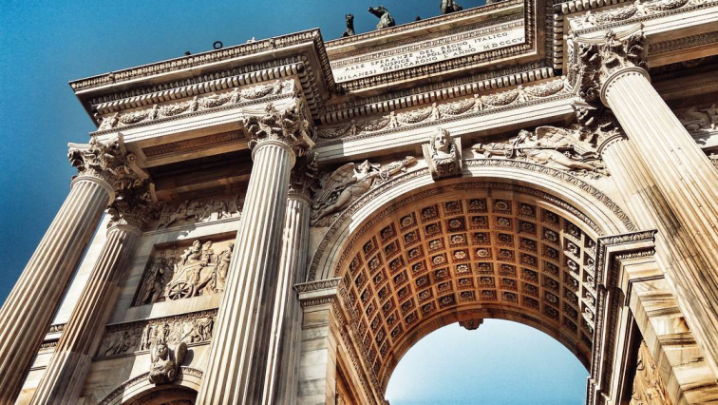
From Duomo Square head towards Piazza Castello on Via Dante. Elliptical Piazza Cordusio is the upcoming area for global shopping and beyond there’s the Castello Sforzesco. The Castle is a quadrilateral enclosing the Piazza delle Armi, with its central tower facing the city and two cylindrical towers covered with bosses on each side and Michelangelo’s Pietà Rondanini inside its museums.
Sforzesco Castle is adjacent to the Liberty-era Parco Sempione – the largest city park in Milan, ending in neoclassical Arco della Pace. You can bike, hike, have a picnic, listen to street performers, buy ice cream or just plain walk around. You can also scale Torre Branca for a birds eye view of the city.
Inside the Palace of Art building, part of Parco Sempione there is the Triennale Design Museum (M1, M2 Cadorna FN Triennale). It hosts exhibitions and events which highlight contemporary Italian design.
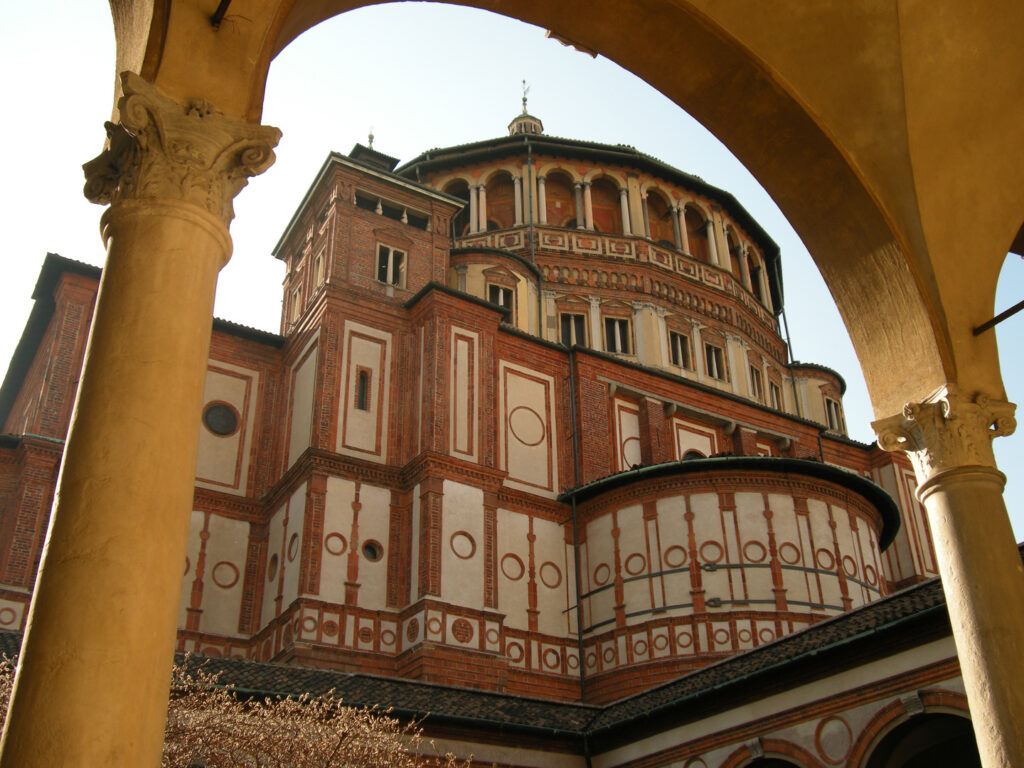


At Santa Maria delle Grazie (M1/M2 Cadorna FN) admire the Last Supper by Leonardo Da Vinci: book your visit well in advance, because everybody wants to see Judas and the Apostles dining with Jesus just before he is arrested.
Visit the mesmeric Romanesque Basilica of St. Ambrose (M2 S. Ambrogio), which harks back to the times when Milano was made capital of the Western Roman Empire.
Facing the entrance portico of the basilica, there is the Leonardo Da Vinci Museum of Science and Technology, which has a submarine, all kinds of engineering machines (including Leonardo’s) and special shows on all aspects of physics, chemistry, astronomy. It has something for all family members.
